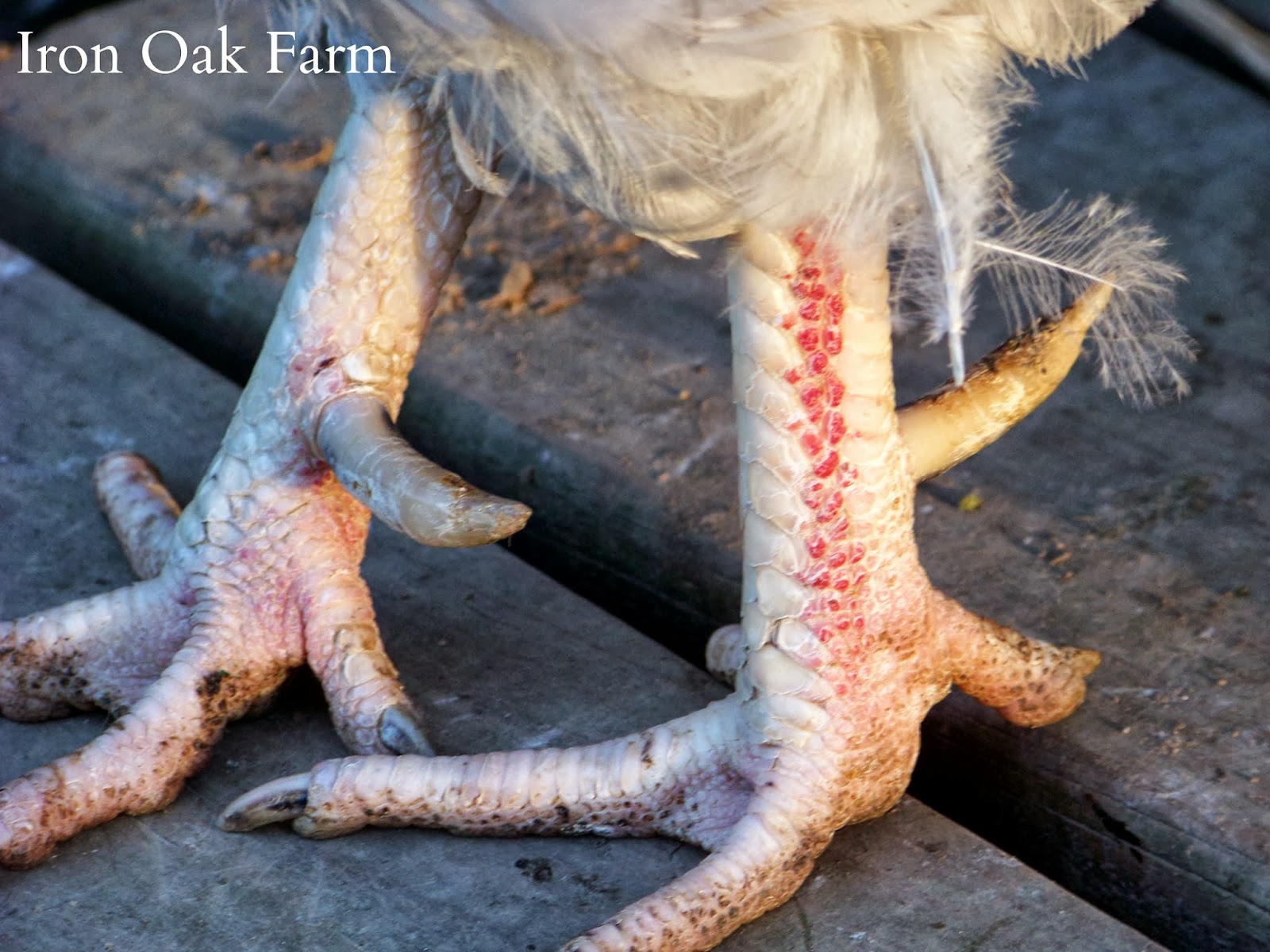It is impossible to see scaly leg or scaly feet mites with your naked eye. Because these pests live their entire life cycle beneath the skin or scales of a chickens' feet cleaning the coop, dusting, spraying, removing bedding, or any other feel good activity will do
nothing to help your chickens. BTW, the red blotches look like naturally occurring color patterns that are on many chicken's feet.
Scaly leg or scaly feet mites bore into the flesh of the your chickens feet and spend their whole life embedded inside of your chicken. This includes when the scaly foot mites defecate. This is what gives scaly leg mite infections that black looking raised scale appearance, you are seeing mite feces oozing out of your birds feet. . I am unsure if coconut oil, caster oil, etc is a good treatment for this pest. After using petroleum jelly or Vaseline for 50 years I have never found anything that works better. As good perhaps but nothing better.
Feather footed varieties, breeds, or strains of chickens IMHO are more prone to suffering permanent damage from scaly foot mites. These chickens were first developed for the show ring and I don't think that they have any business running around outside or free ranging. Besides most BYC people are not (again in MHO) serious enough about their poultry to keep feather footed breeds.
ALL, as in
everyone of your chickens should be treated once each year for foot mites whether you see any signs or not. The same schedule (or more often) should also be followed for the treatment of any other types of mites.
The use of Dawn Dishwashing Detergent is exactly counter to the good health of all chickens and birds. This is especially true when dealing with foot mites. Well I guess that if a Panamax oil tanker ran aground and broke apart on your chicken coop that you maybe, possibly, perhaps, could use Dawn to clean the heavy
OIL off of your birds feathers. Let us remember that
ALL chickens have a special oil gland on the base of their tail called the
"POPE'S NOSE" and that the sole purpose of the POPE'S NOSE is to supply the oil that your chickens apply to their feathers to dress their plumage and to lock the barbs together to create a barrier to wind, weather, water and some degree to pests.
View attachment 1471135


 I mess up a lot when on my silly autocorrecting phone. I swear it must be the dumbest phone on Earth. I have no clue how it comes up with some of these things.
I mess up a lot when on my silly autocorrecting phone. I swear it must be the dumbest phone on Earth. I have no clue how it comes up with some of these things.





